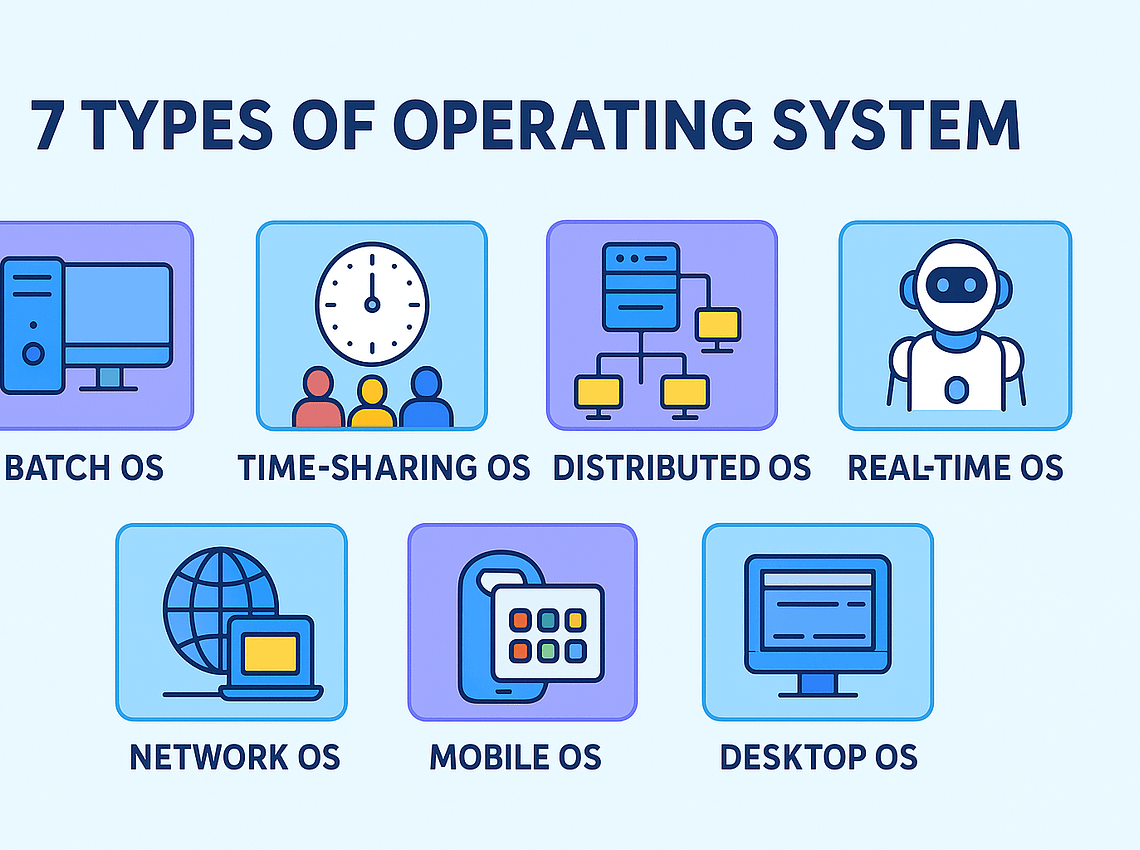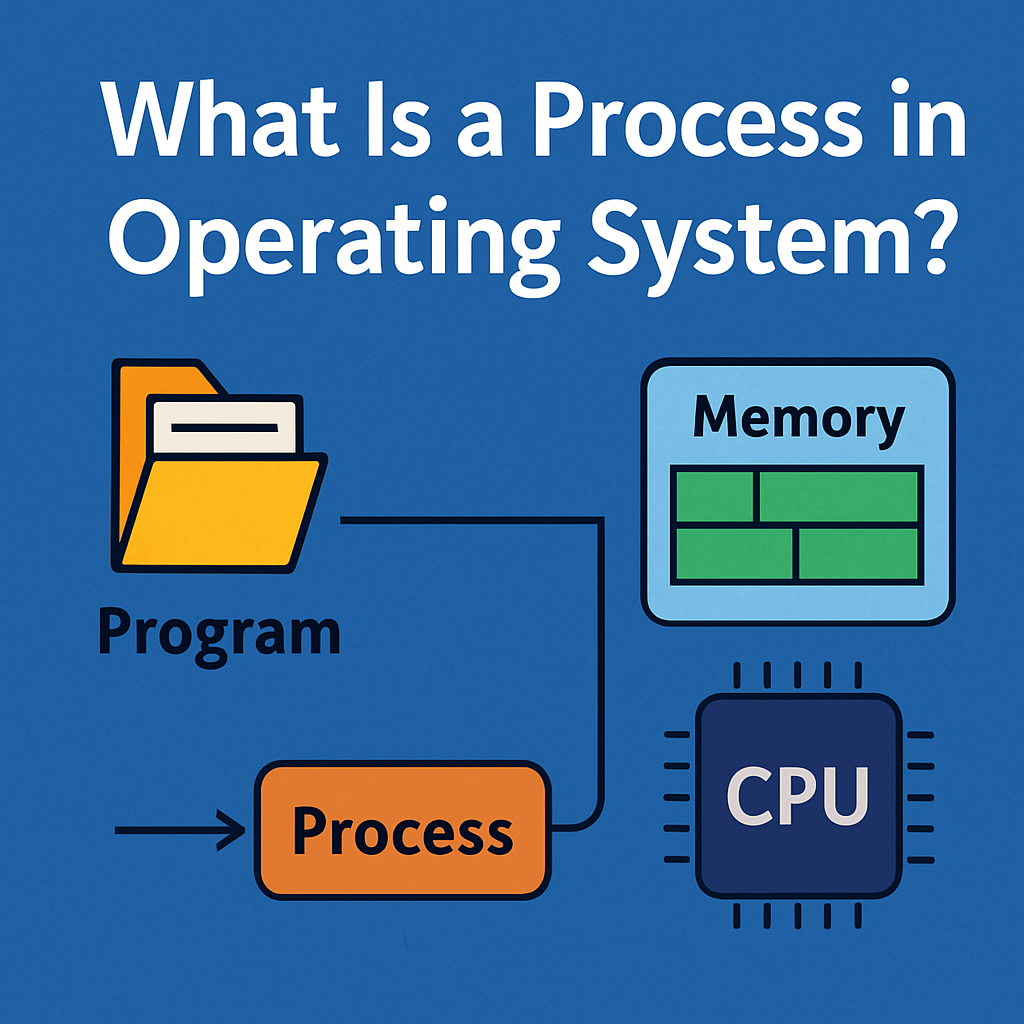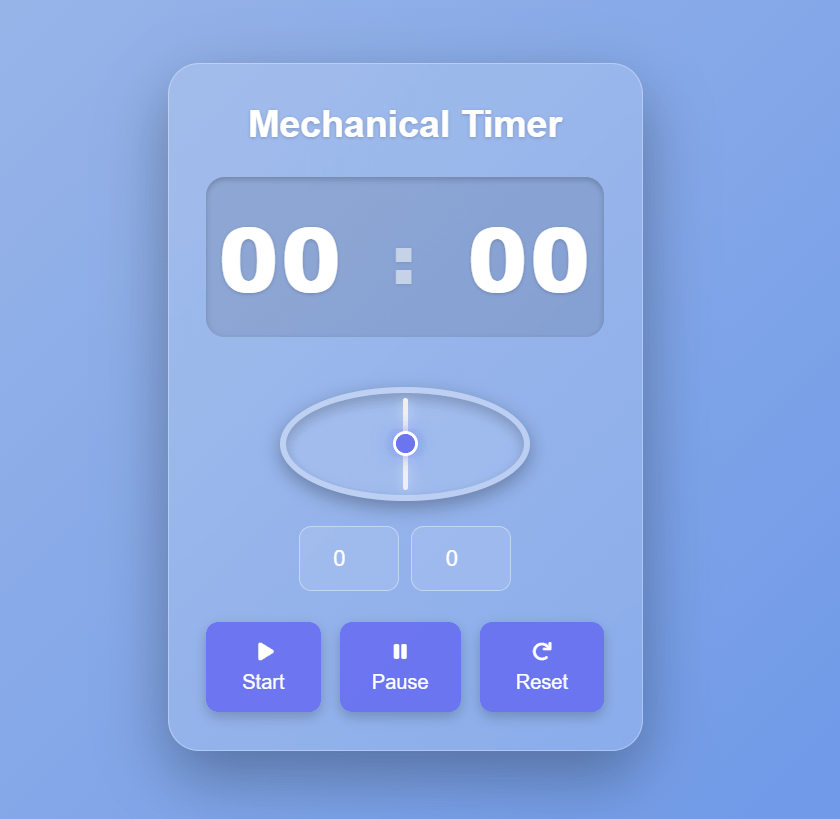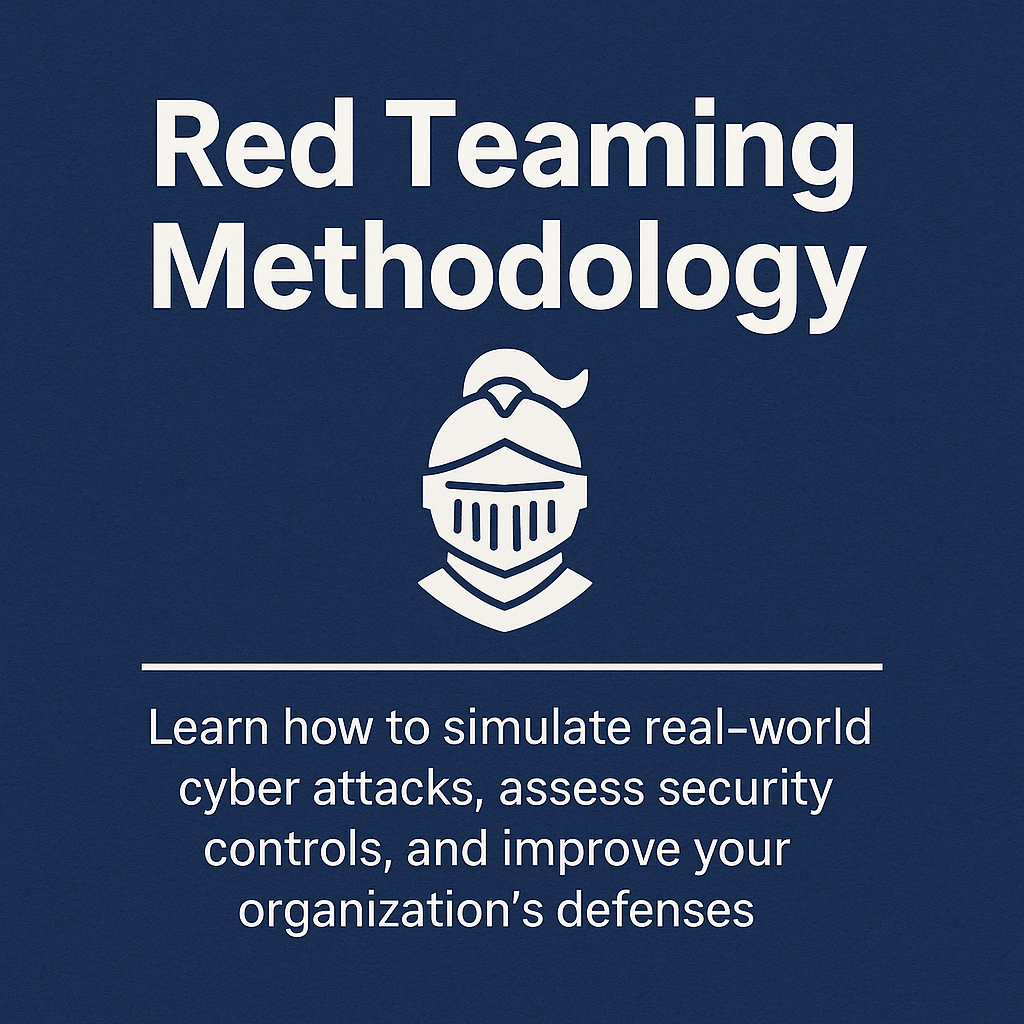7 Types of Operating System (2025) – Complete Guide with Examples & Comparison

Table of Contents
ToggleIntroduction
The types of operating system are the backbone of modern computing. Every device you use—whether it’s a Windows laptop, an Android smartphone, or even a medical robot—runs on some kind of OS.
Did you know that over 90% of devices in the world rely on just a few OS families? Understanding these OS types isn’t just important for students; it’s essential for IT professionals, tech enthusiasts, and anyone curious about how computers actually work.
In this guide, we’ll explore the 7 major types of operating system with examples, advantages, disadvantages, and a handy comparison table. By the end, you’ll have a crystal-clear understanding of each type and where it’s used. 🚀
What is an Operating System? (Definition & Role)
An operating system (OS) is software that manages a computer’s hardware and software resources. It acts as a bridge between users and machines, allowing applications to run smoothly.
Key Functions of an OS:
Process Management: Controls CPU allocation and execution of tasks
Memory Management: Keeps track of RAM usage and optimizes performance
Input/Output Control: Manages keyboards, printers, displays, and other devices
Security and Access Control: Protects data from unauthorized access
File Management: Organizes, stores, and retrieves data efficiently
Example Devices: Windows PCs, macOS laptops, Linux servers, and Android smartphones.
External Resource: Microsoft OS Documentation
Classification of Operating Systems
Operating systems can be classified based on how they handle tasks, users, and resources. It’s important to understand OS types vs OS versions. For example, Windows 10 is a version of the Windows OS, but Time-Sharing OS is a type of operating system.
Main Classification Categories:
Batch Operating System
Time-Sharing Operating System
Distributed Operating System
Real-Time Operating System (RTOS)
Network Operating System (NOS)
Mobile Operating System
Desktop/General-Purpose Operating Systems
Batch Operating System (Early OS Type)
A batch operating system processes jobs in batches without user interaction. Jobs are collected, grouped, and executed sequentially.
Characteristics:
No direct user interaction during execution
Tasks are processed in queues
Requires job scheduling for efficiency
Examples:
IBM OS/360
Early mainframe operating systems
Advantages:
Efficient for processing large volumes of data
Reduces CPU idle time
Disadvantages:
No real-time interaction
Errors in one job can affect the entire batch

Time-Sharing Operating System (Interactive OS Type)
A time-sharing operating system allows multiple users to share system resources simultaneously. The CPU switches rapidly between tasks, giving the impression of parallel execution.
Key Points:
Multiple users can interact with the system at once
Uses multiprogramming to optimize CPU usage
Examples:
UNIX
Multics
Advantages:
Improved user experience
Efficient resource allocation
Disadvantages:
Can become slow with too many users
More complex than batch OS
Comparison: Unlike batch OS, time-sharing OS allows real-time interaction with users.
External Link: UNIX History
Distributed Operating System (Modern Networked OS)
A distributed operating system manages resources across multiple computers but appears as a single coherent system. This type is essential for modern cloud computing and clusters.
Characteristics:
Multiple computers communicate and coordinate tasks
High fault tolerance
Scalability for large networks
Examples:
Amoeba OS
LOCUS
Use Cases:
Cloud infrastructure
Scientific research clusters
Advantages:
Efficient resource utilization across systems
Fault tolerance ensures reliability
Disadvantages:
Complex to design and maintain
Requires fast and reliable networking
Real-Time Operating System (RTOS Types)
Real-Time Operating Systems (RTOS) guarantee that tasks are executed within a strict time frame. Timing is critical in applications like medical devices or robotics.
Types of RTOS:
Hard Real-Time OS: Deadlines must always be met (e.g., pacemakers)
Soft Real-Time OS: Deadlines are important but not critical (e.g., multimedia applications)
Examples:
QNX
VxWorks
RTLinux
Use Cases:
Aerospace systems
Robotics and industrial automation
Medical devices

Network Operating System (NOS)
A Network Operating System provides services for computers connected in a network, such as file sharing, printer access, and communication.
Examples:
Windows Server
Linux server editions
Novell NetWare
Advantages:
Centralized network management
Better security and resource allocation
Disadvantages:
Requires dedicated hardware
Higher initial cost
Mobile Operating System (Smartphone OS Types)
Mobile operating systems are optimized for portable devices, touch interfaces, and battery efficiency.
Examples:
Android
iOS
Features:
App ecosystem
Touchscreen navigation
Power management
Differences from Desktop OS:
Mobile OS are lightweight
Optimized for power efficiency
Less hardware flexibility

Comparison of Different Types of Operating System
Examples of Popular Operating Systems by Category
Desktop OS: Windows, macOS, Linux
Server OS: Red Hat Linux, Windows Server
Mobile OS: Android, iOS
Real-Time OS: QNX, VxWorks

Why Understanding Types of Operating System Matters
Academic importance: Common exam topic in computer science
Career relevance: Helps IT professionals choose appropriate OS for systems
Everyday impact: From servers to mobile devices and embedded systems, OS affects every tech interaction
Conclusion
The types of operating system—batch, time-sharing, distributed, real-time, network, and mobile—form the backbone of modern computing. Each type has specific purposes, advantages, and real-world applications.
Students can use this as a revision guide, while IT enthusiasts and professionals can apply it for smart system choices.








